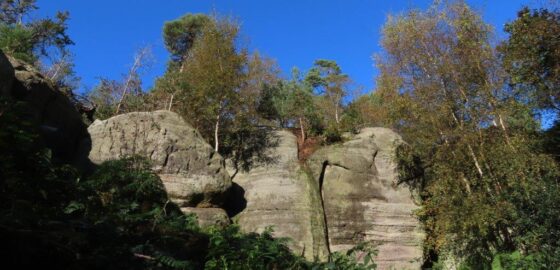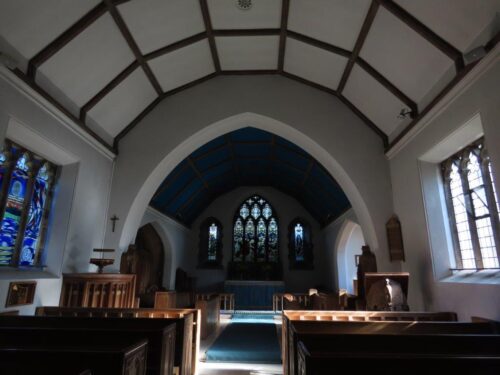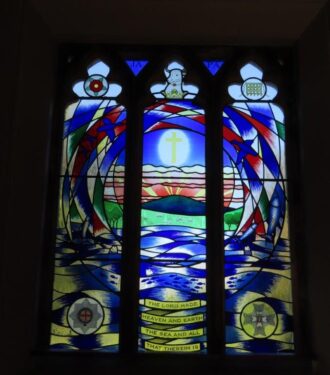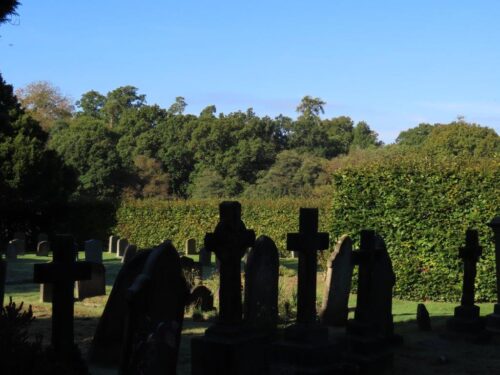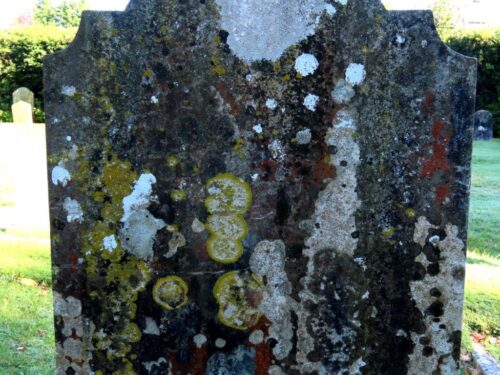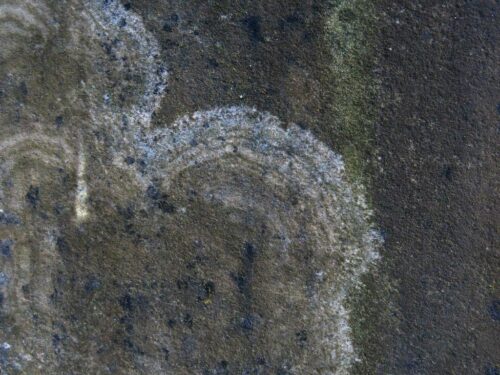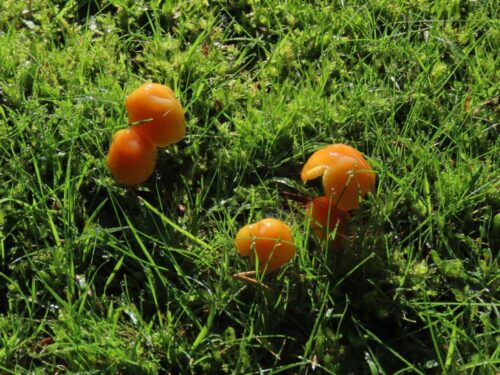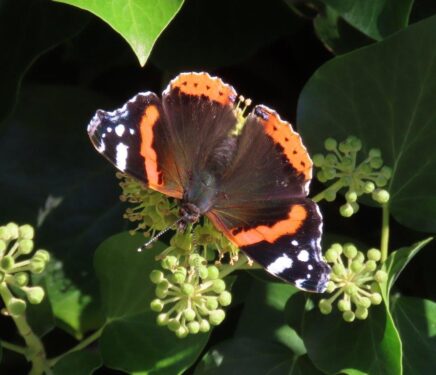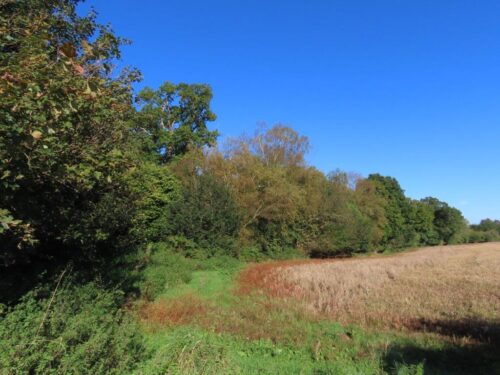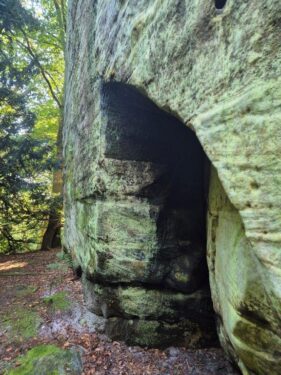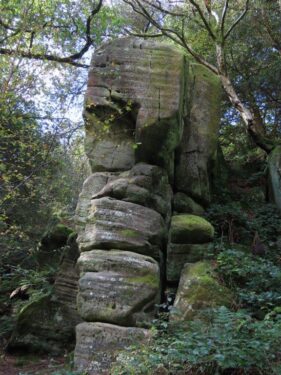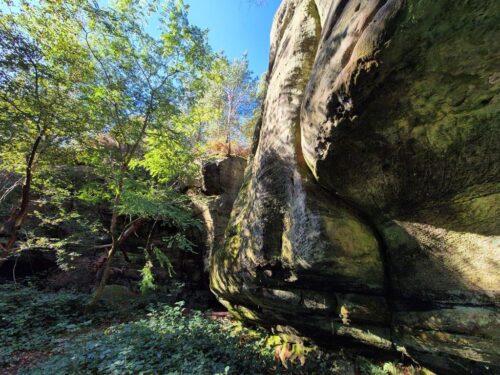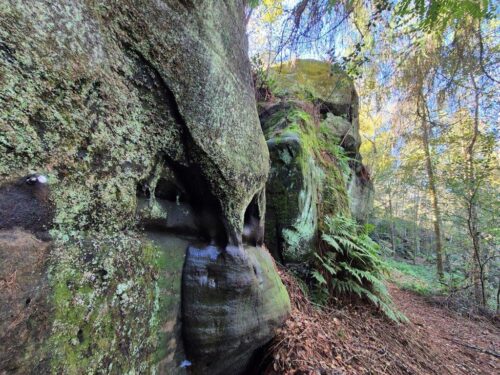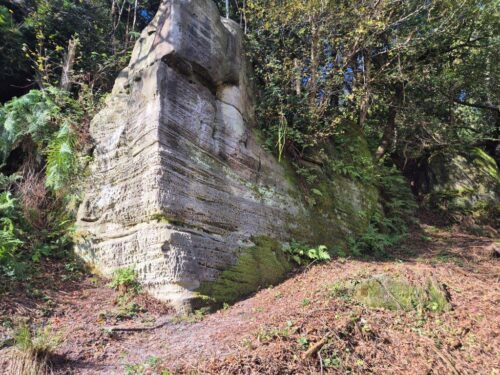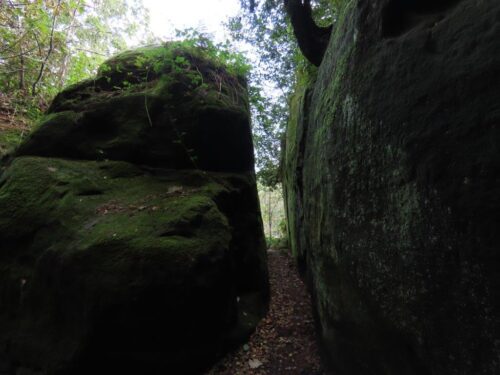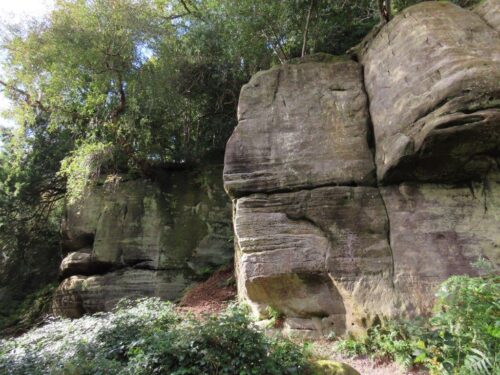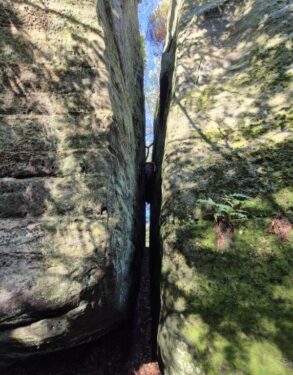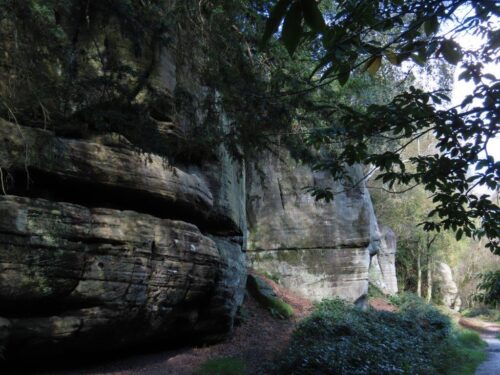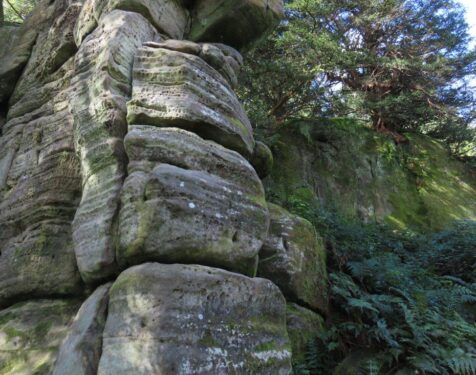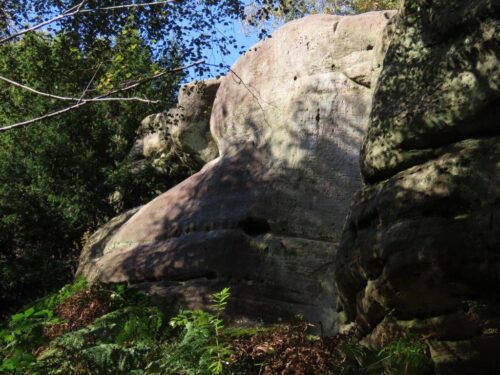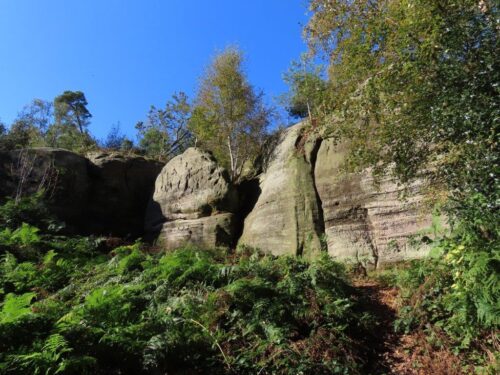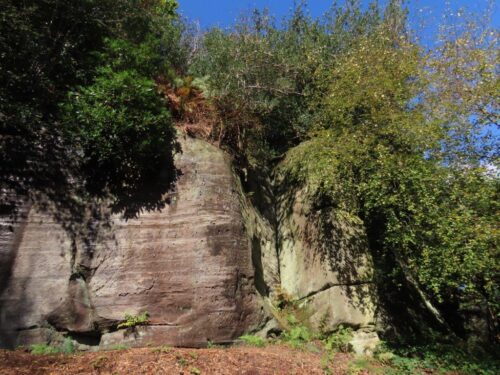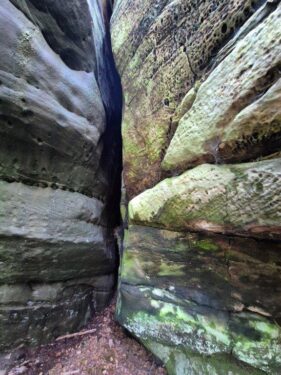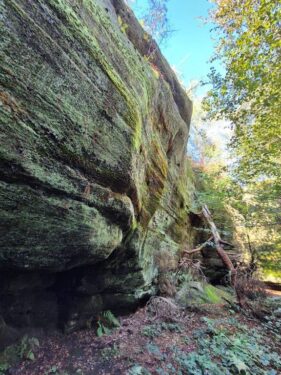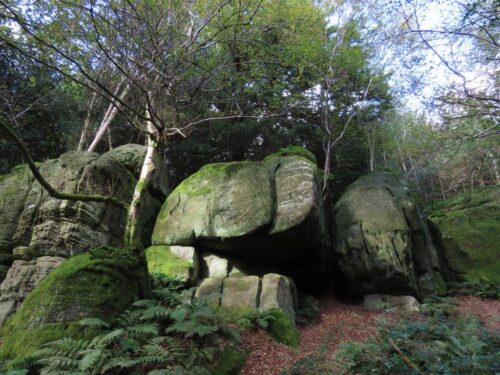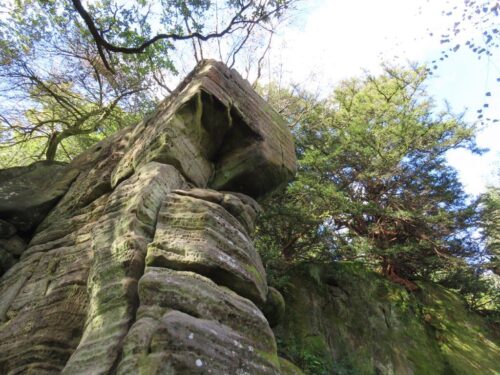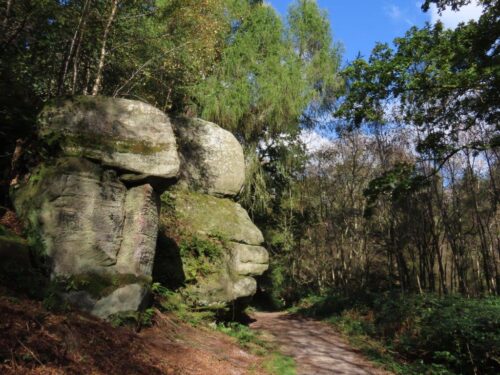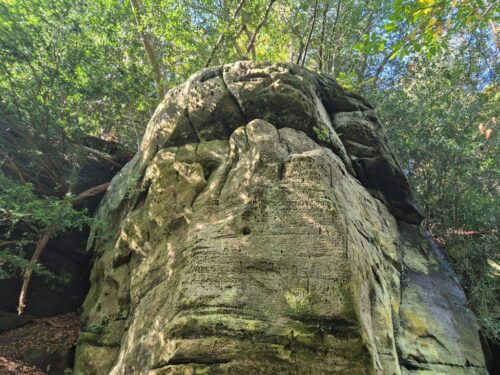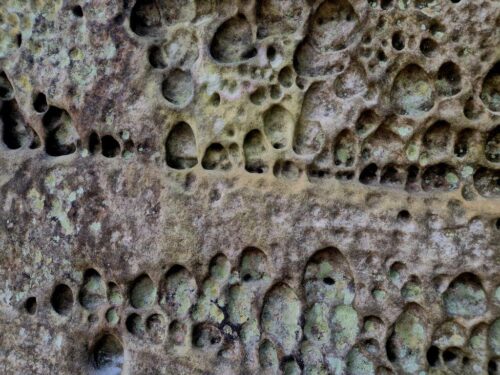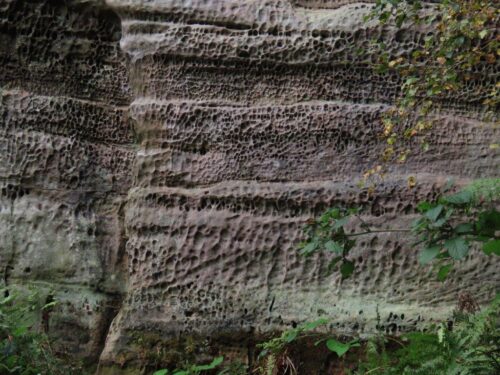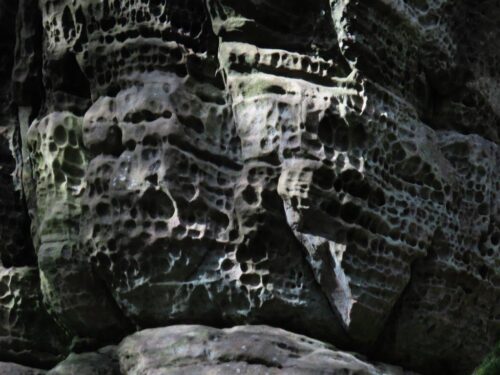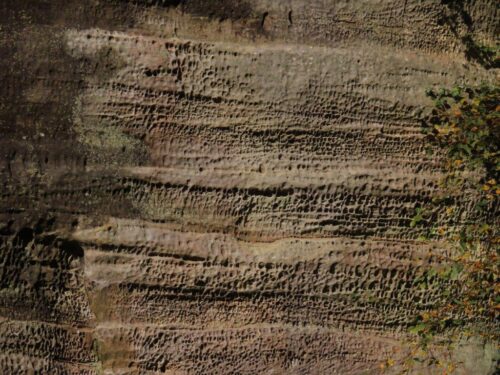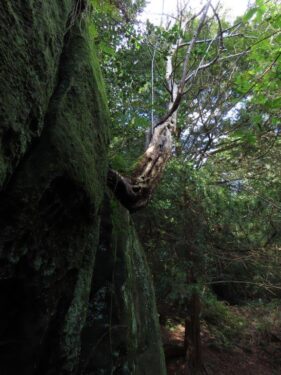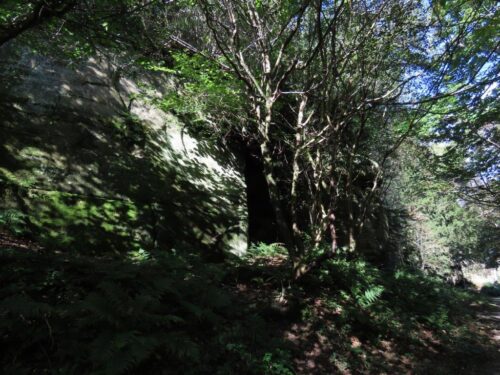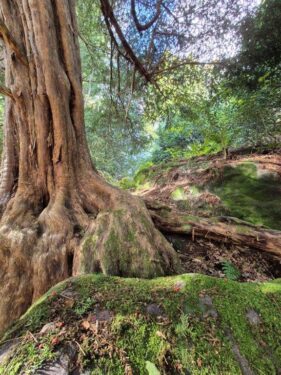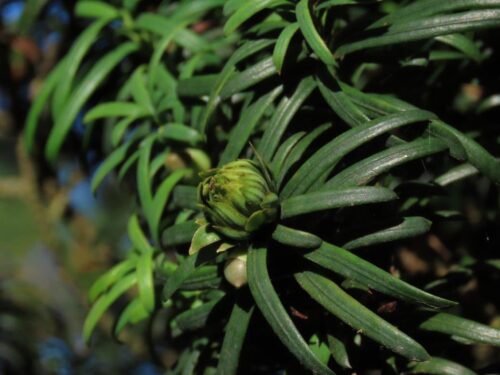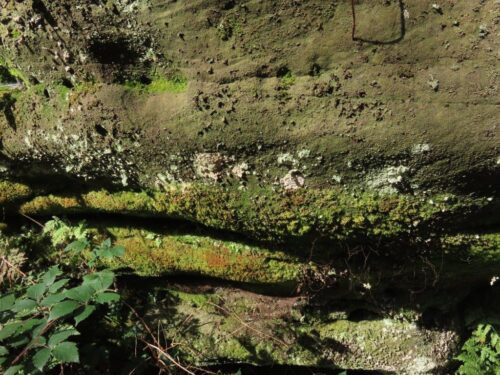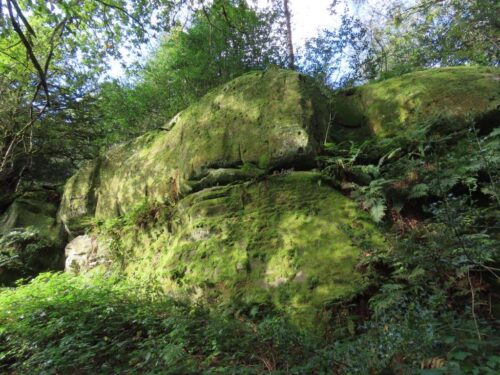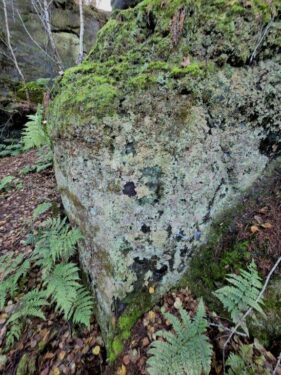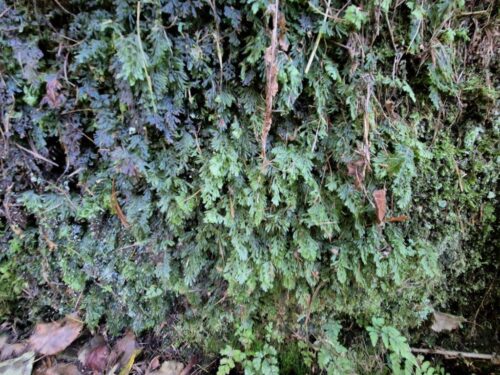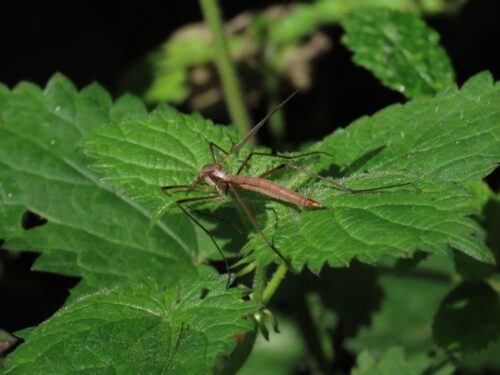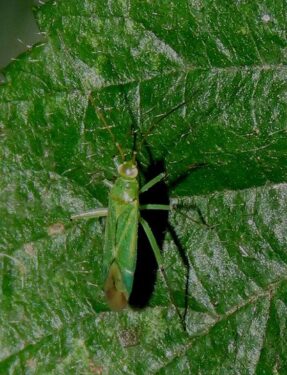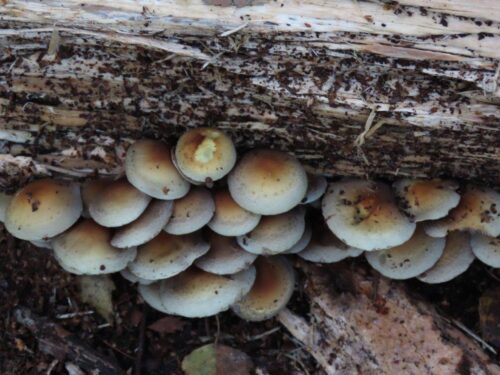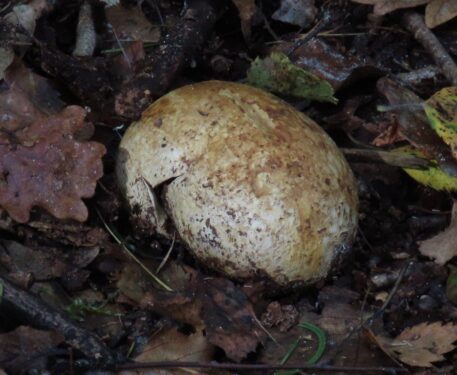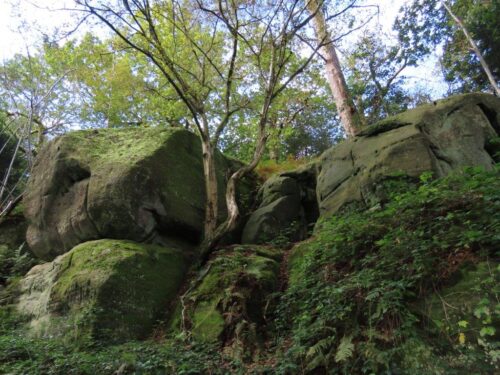After a very comfortable night (and outstanding breakfast) in the Royal Wells Hotel, we headed out again under blue skies by bus across the border into East Sussex to the village of Eridge. The bus stop was outside the local church, and as the churchwarden was just opening up it would have been rude not to have had a look around…
A bit Arts & Crafty on the outside, the inside was delightfully simple, with some glorious modern stained glass, very reminiscent of the Chagall windows at Tudeley we had seen a few years previously…not surprising perhaps as that is only some 20km away.
Plenty to see in the churchyard too, from lichens on the gravestones to waxcap fungi studding the springy turf, and Red Admirals nectaring on the flowering Ivy in the hedges.
But our real reason for being here was the Sussex Wildlife Trust nature reserve just down the road, Eridge Rocks. This was Jude’s first and my second time here – and my visit six months ago was in very different circumstances, both wet and windy. Heading down the lane there is little sign of the wonderland therein…
But as soon as you enter, the world is transformed. Rocks and cliffs, caves, cracks and crevices, enfolded by trees and dripping in mosses, liverworts and ferns as befits this south-eastern outlier of the Atlantic rain-forest.
It is the province of goblins and wood-sprites, the petrified heads of lizards and giants, entwined with garlands of Ivy and Bracken. It may be the same Wealden sandstone rock formation as we saw yesterday at Tunbridge Wells Common, but here it is imbued with the spirit of bountiful, even pagan, Nature.
In places the rock faces are etched with the signs of millennia of the gritty wind erosion characteristic of deserts (as we have seen previously in Menorca and West Bay in Dorset), each face a unique honeycomb of geological history.
Elsewhere, the trees have melded with the rocks, moulded into such contortions it is difficult to see where wood ends and stone begins.
The older trees are Yews, perhaps the longest-lived of all our trees, harking back to an age before there were any churchyards for them to be trapped within. And the tips of many a shoot were swollen into the almost mini-artichoke form of the gall caused by the the midge Taxomyia taxi. Although the national distribution of this gall is very sparse and patchy, we do seem to find it in many places, including this nature reserve and Eridge churchyard.
And there is the life to be found on the rocks, carpets of moss and lichen. sprouting ferns from each crevasse. Some deep overhands had the green baize ceiling carpet of Killarney Fern gametophyte and, just where I found it in March, the Tunbridge Filmy-fern, denizen of the lowest light-levels imaginable.
And yes there were a few insects and fungi …
… but really centre-stage were the bones of the land, a journey back into the depths of pre-history, almost enough to mask the distant but incessant roar of the A26….
For other blogs in this series see
An autumn break in Kent and Sussex: part 1 – Tunbridge Wells | Chris Gibson Wildlife
